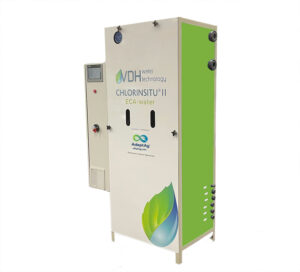
In this article, the experts at AdeptAg will dive into five of the top questions regarding the Chlorinsitu-II ECA machine and how it is used in the horticulture industry. The questions we will discuss are:
- What is ECA?
- How does ECA water remove biofilm and pathogens?
- How does the ECA machine make free chlorine?
- How much ECA solution do I need to dose?
- How does ECA compare to other water treatment technologies?
What is ECA?
Electrochemically Activated (ECA) water is a powerful disinfectant produced through the process of electrolysis, where water and a salt solution (typically potassium chloride) are electrically charged to create a solution rich in oxidants. This process produces free chlorine as hypochlorous acid and hypochlorite, which are highly effective in killing bacteria, fungi, viruses, and algae. The Chlorinsitu-II units are a prime example of this technology, generating ECA water on-site for immediate use in various applications such as irrigation systems, sanitation, and water disinfection.
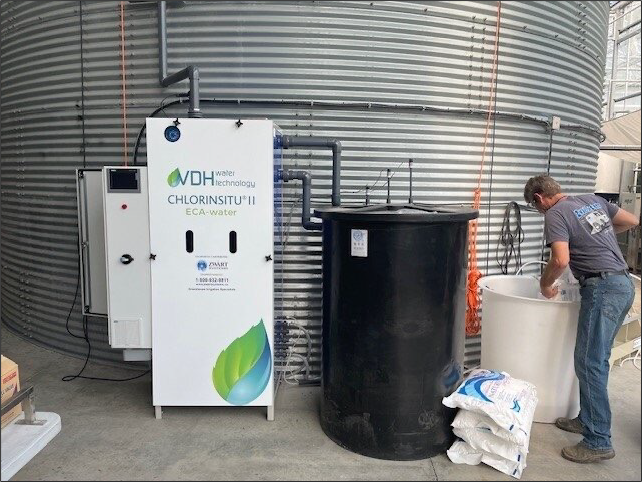
How Does ECA Water Remove Biofilm and Pathogens?
Hypochlorous acid and hypochlorite, acting as free chlorine, are the primary disinfectants produced by the ECA process. They work through oxidation, a chemical reaction that destroys the cell membranes of microorganisms, leading to cell lysis and death. Biofilms, which are aggregates of microorganisms in a self-generated slime layer, are particularly challenging to remove. However, ECA water penetrates the biofilm, oxidizing the organic compounds within it and effectively eliminating the pathogens hidden inside. This ensures a thorough disinfection of irrigation systems and other water networks, preventing the spread of plant pathogens and maintaining clean water systems.
How Does the ECA Machine Make Free Chlorine?
The ECA machine, such as the Chlorinsitu-II unit, produces hypochlorous acid and free chlorine through an electrolysis process. The unit uses softened water and potassium chloride (KCl) in an open electrolysis cell. During electrolysis, the chloride ions (Cl-) are oxidized to form chlorine gas (Cl2), which dissolves in water and reacts with the potassium chloride to form potassium hypochlorite (KOCl), this dissociates into hypochlorous acid (HOCl) and hypochlorite ions (OCl-). This high concentration of free available chlorine (FAC) makes ECA water a potent disinfectant suitable for various applications, including biofilm and pathogen control in irrigation systems. The newly generated ECA solution is stored in a small tank where it can be dosed into the irrigation system as needed.
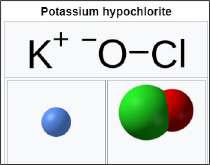
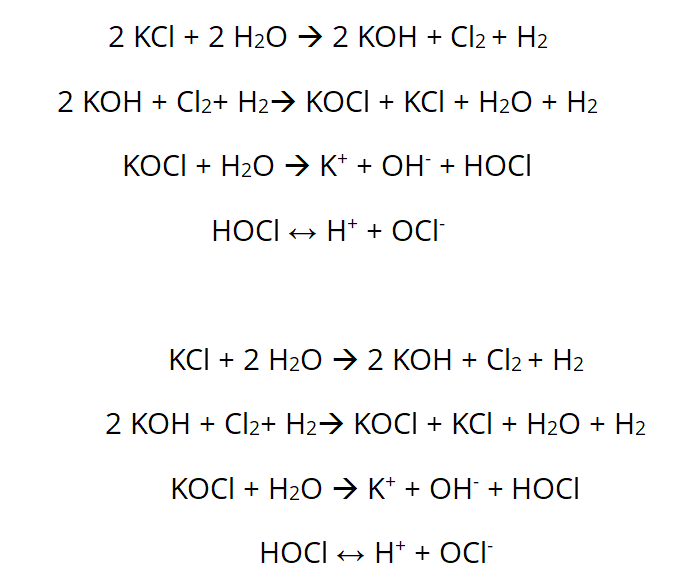
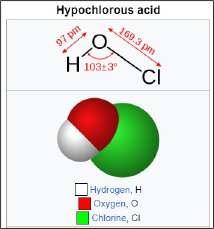
The Chlorinsitu-II uses an open electrolysis cell, meaning that there is no membrane that separates the cell’s anode and cathode and the reactions inside of it. Sodium and potassium salts can be used interchangeably in the Chlorinsitu-II, but in horticulture applications, KCl is recommended. This is because potassium is able to be used as a fertilizer while additional sodium is typically detrimental to plant growth.
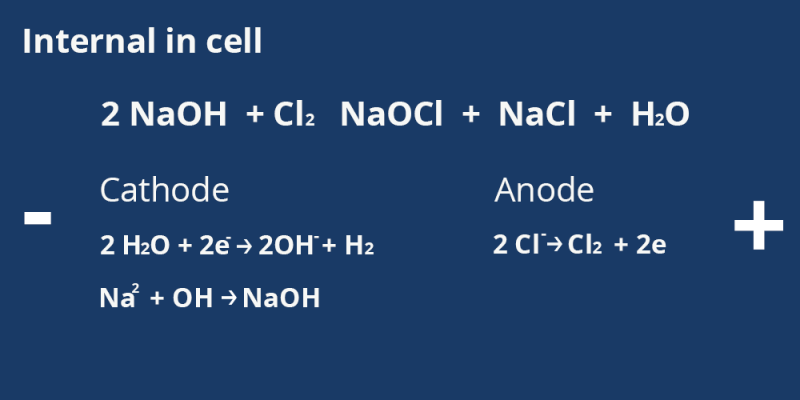
- NaOCl (Sodium Hypochlorite)
- NaCl (Salt)
- H2O (Water)
- H2 (Hydrogen)
How Much ECA Solution Do I Need to Dose?
Determining the proper ECA dose involves multiple steps and intermittent reanalysis. There is a balance between dosing too much ECA that causes damage to plants and not enough to the point pathogens are allowed to reproduce. This balance can be different for varying crops but the procedure for determining a proper dose is the same. The amount of free chlorine consumed in an irrigation line can change over time.
The concentration of ECA added to an irrigation line will decrease as the free chlorine reacts with varying pathogens. It is common for ECA to be dosed at 4 ppm, have 3 ppm consumed in the irrigation line, and enter the root zone at 1 ppm. Pythium requires ~2ppm of free chlorine over 3 minutes to remove it as a threat. Generally, crops are not impacted by free chlorine levels below 1 ppm with some such as tomatoes showing limited phytotoxicity to 8 ppm. The ECA solution can also be used for other situations such as disinfecting irrigation leachate or cleaning processes such as washing and surface sanitization.
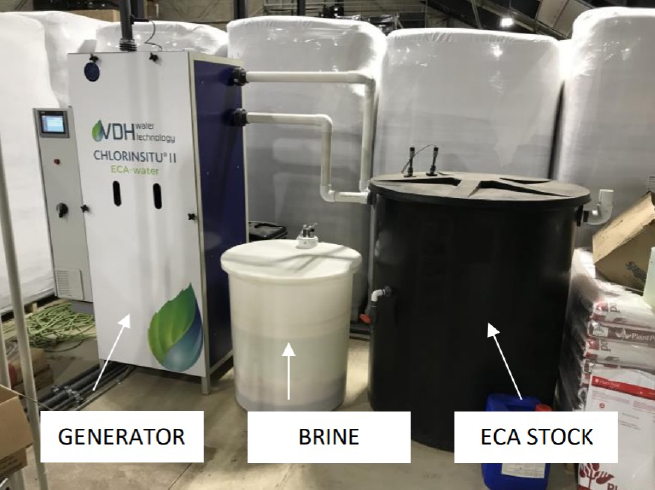
How Does ECA Compare to Other Water Treatment Technologies?
ECA Machine technology stands out from other water treatment methods due to its combination of effectiveness, safety, and cost-efficiency. It is often recommended to combine ECA technology with other water treatment options, especially fine filtration as removing particulates can greatly increase the efficacy of the disinfection process.
- UV Treatment: While UV treatment is effective at neutralizing microorganisms, it does not provide residual disinfection, meaning it cannot prevent biofilm formation or offer long-term pathogen control. ECA water provides residual chlorine that continues to disinfect throughout the water system. UV also relies on high transparency of the irrigation water, opaque water or a dirty UV bulb will render the system ineffective.
- Ozonation: Ozone is a powerful oxidant but can be expensive and complex to generate and handle. ECA water offers a simpler and more cost-effective alternative with similar disinfection capabilities. It also commonly results in the complete precipitation of iron and manganese fertilizers.
- Hydrogen Peroxide: While hydrogen peroxide is a strong disinfectant, it does not have the same residual effect as ECA water, making it less effective for continuous disinfection in water systems. It also cannot be as easily created on site, leading to increased operational costs.
| Water Treatment Type | Treatment Mechanism | Negative Consequences | Capital Costs | Operational Costs |
|---|---|---|---|---|
| Ultraviolet | UVC radiation inhibits reproduction. | Deteriorates chelates, causing iron precipitation. High Turbidity/T10 | $$ | $$ |
| Ozone | Oxidation and destruction of cell walls. | Iron precipitation, ozone gas safety. | $$$ | $$ |
| Oxygen Nanobubbles | Stable supersaturated oxygen environment, nano bubble implosion. | Does not remove all pathogens. Some iron precipitation. | $ | $ |
| Hydrogen Peroxide Injection | Oxidation and overwhelming of cell processes | Care for dosing needed. | $ | $$$ |
| Chlorine Injection through ECA | Reaction with biomolecules causing cellular damage. | Care for dosing needed. | $ | $ |
| Reverse Osmosis (RO) | Physical removal of pathogen through filtration. | Removes all nutrients from water. Brine discharge. | $$ | $$$ |
| Ultrafiltration (UF) | Physical removal of pathogen through filtration. | Micron filtration required prior to UF to prevent clogging of membranes. Brine Discharge. | $$$ | $$$ |
| Micron Filtration | Reduction of pathogen and removal of particulates. | Does not remove or disinfect all pathogens. | $ | $$ |
Conclusion
In summary, ECA Machine technology offers a robust, safe, and economical solution for water treatment, particularly in agricultural and horticultural settings. By producing hypochlorous acid and free chlorine on-site, ECA units like the Chlorinsitu-II ensure effective and continuous disinfection, making them a superior choice for maintaining clean and pathogen-free water systems on a budget.
For more information on the Food Grade ECA Machine, please contact your AdeptAg sales representative.
